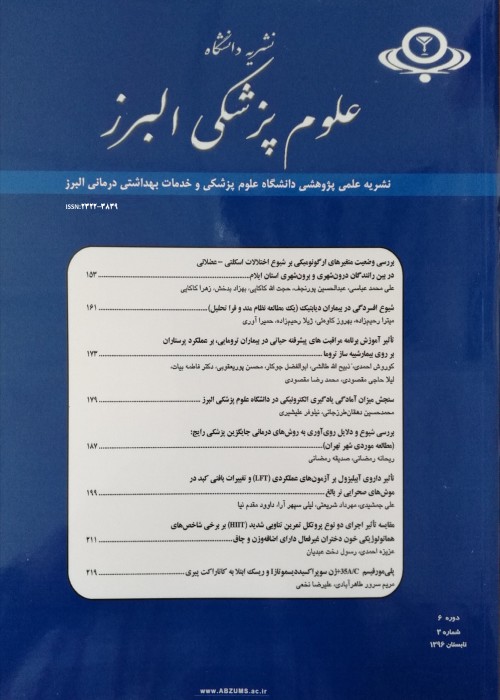Evaluation of Antimicrobial Resistance Pattern in Escherichia coli Strains Isolated from Patients Referred to Teaching Hospitals of Mazandaran University of Medical Sciences
Urinary tract infections (UTIs) are among the most common infections in both outpatients and inpatients worldwide. Due to the widespread use of empirical antibiotic therapy, the resistance rate to bacteria causing UTIs has significantly increased. Therefore, the present study was designed to investigate the pattern of drug resistance in Escherichia coli strains isolated from patients with UTIs referred to the educational centers of Mazandaran University of Medical Sciences.
In this cross-sectional study, 100 urine samples completely randomly were taken from patients with UTI. Patient characteristics including age, gender, outpatient and/or inpatient were collected from patients' clinical records and laboratories data services. After confirmation of E. coli strains, antibiogram was performed by disk diffusion method according to Clinical Laboratory Standards Institute (CLSI) instructions.
Out of 100 positive urine culture samples, the highest prevalence of E. coli causing UTI was seen in the female (83%) and outpatient (53%) groups. The age range of the patients was between 0 (6-month-old) and 95 years. The highest resistance was reported against ampicillin (66.6%) and the lowest resistance to imipenem (1%), followed by cefoxitin (1.2%) and gentamicin (1.7%), while resistance to amikacin and tobramycin was not found. Of 100 E. coli isolates, 44% were associated with multidrug resistance phenotype; 32 cases of which were women and 25 cases were for hospitalized patients.
Following the overuse and misuse of antibiotics, drug resistance is increasing over time. Due to high rates of resistance to ampicillin, cotrimoxazole and cephalosporins, especially cefazolin and cefotaxime, the use of these drugs in the treatment of UTIs will not be a good option. Our data show that carbapenems and aminoglycosides should be considered as an option for first-line treatment of hospitalized patients with UTIs, in the study area.
- حق عضویت دریافتی صرف حمایت از نشریات عضو و نگهداری، تکمیل و توسعه مگیران میشود.
- پرداخت حق اشتراک و دانلود مقالات اجازه بازنشر آن در سایر رسانههای چاپی و دیجیتال را به کاربر نمیدهد.


